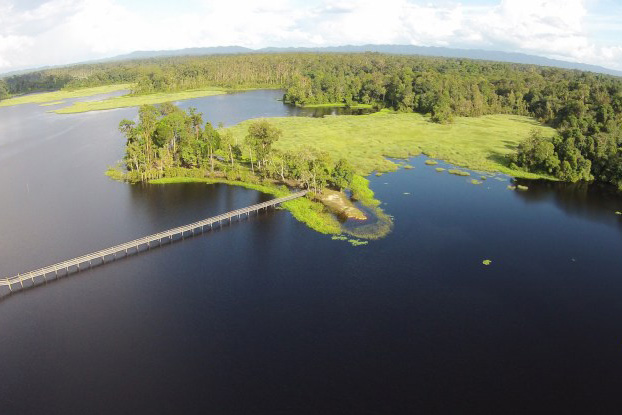
By Catriona Croft-Cusworth, originally published at CIFOR’s Forests News
Asia-Pacific nations are some of the world’s most vulnerable to the effects of global climate change. Rising sea levels, extreme weather events and impacts on food security threaten the densely populated and rapidly developing nations throughout the region.
However, this region also holds some of the world’s greatest potential for climate change mitigation through the reduction of emissions from deforestation and forest degradation, plus the conservation and sustainable management of forests and enhancement of forest carbon stocks – what’s known as REDD+.
Now that the Paris Agreement has affirmed a role in the global climate change agenda for REDD+, a major challenge moving forward is finding accurate and transparent methods for the measurement, reporting and verification (MRV) of the contribution of forests to reducing global emissions.
Regional leaders had the opportunity to share experiences in designing systems for MRV at the 2016 Asia-Pacific Rainforest Summit (APRS) held from 3-4 August in Bandar Seri Begawan, Brunei Darussalam.
At a session titled ‘Keeping track of forests: systems for measurement, reporting and verification’, speakers had the chance to compare notes from Papua New Guinea, Fiji, Indonesia and Australia on developing national systems for MRV.
REGIONAL (AND GLOBAL) PIONEERS
Papua New Guinea is a global pioneer of REDD+, having introduced the concept together with Costa Rica at COP 11 in 2011. Home to the world’s third largest area of tropical rainforest after the Amazon and the Congo Basin, the country holds huge potential for REDD+.
This year, Papua New Guinea launched a public web portal to disseminate information on its national forest monitoring system.
Alfred Rungol, Acting Manager of MRV at Papua New Guinea’s Climate Change Development Authority, said he hoped the portal would bring greater transparency and better results for the country’s REDD+ processes.
“The establishment of a national forest monitoring system is a key element of REDD+,” he said in his presentation. “PNG needs to improve understanding of its forest and monitoring capacity for sustainable management and conservation.”
Indonesia, another early adopter of MRV systems in the region, has set up a detailed MRV system that generates information on past, present and future greenhouse gas emissions and removals from land-based activities under the Indonesian National Carbon Accounting System, or INCAS.
Haruni Krisnawati is one of the leading technical developers of INCAS, and a senior researcher in the Research, Development and Innovation Agency within the Indonesian Government Ministry of Environment and Forestry.
She shared Indonesia’s experience, calling the development of INCAS an important first step toward reaching the country’s ambitious targets on greenhouse gas (GHG) emission reductions.
As Haruni explained in her presentation, INCAS is designed as a ‘tier 3’ GHG accounting system, meaning that it aims to implement the most sophisticated method outlined by the Intergovernmental Panel on Climate Change (IPCC) in its 2006 guidelines.
This means that it is “scalable and uses the best available data,” she explained, including data on country-specific technology-based emission factors.
MRV? THERE’S AN APP FOR THAT
Meanwhile, other nations in the Asia-Pacific are facing steeper challenges in introducing national systems for MRV.
Samuela Lagataki, Permanent Secretary of Fiji’s Ministry of Fisheries and Forests, said that his country faced serious challenges in accessing baseline data, coming up with measures and using datasets.
“We have found significant gaps due to a lack of capacity,” he said.
The Australia-based Global Forest Observations Initiative (GFOI) has designed an application called REDDcompass, launched in April this year, which aims to guide users through the process of designing an MRV systems tailored to a specific nation’s needs.
On the second day of the Summit, Carly Green, Methods and Guidance Component Manager at GFOI, gave a live demonstration of REDDcompass, taking regional leaders through the process of “climbing the MRV mountain”, starting from the base of institutional arrangement and policy decisions, moving upward to measurement and estimation, and finally reaching the stage of reporting and verification.
GFOI is now working with consultants in Lao PDR to develop a REDD+ framework in that country. It’s hoped that the REDDcompass application can help to assess progress so far and identify priorities for moving forward.
“More countries are using freely available data. But there’s still a need to understand what’s going on within those pixels,” Green said.
“REDDcompass basically takes the guesswork out of what you have to do.”
This research forms part of the CGIAR Research Program on Forests, Trees and Agroforestry.











